As one of the most recognizable landmarks in the world, the Taj Mahal Architecture set is a showstopper. And at 2022 pieces, there is a lot of detail packed into this 23 cm (9 in) wide micro scale set. Of course, this is not the first time we’ve seen the Taj Mahal in plastic brick form but being at micro-scale makes the detailing significantly different compared to original Creator Export set that had 5923 pieces! So how well did this set photograph and what were my favorite (and not so favorite) parts? Let’s find out!
A quick note on unboxing
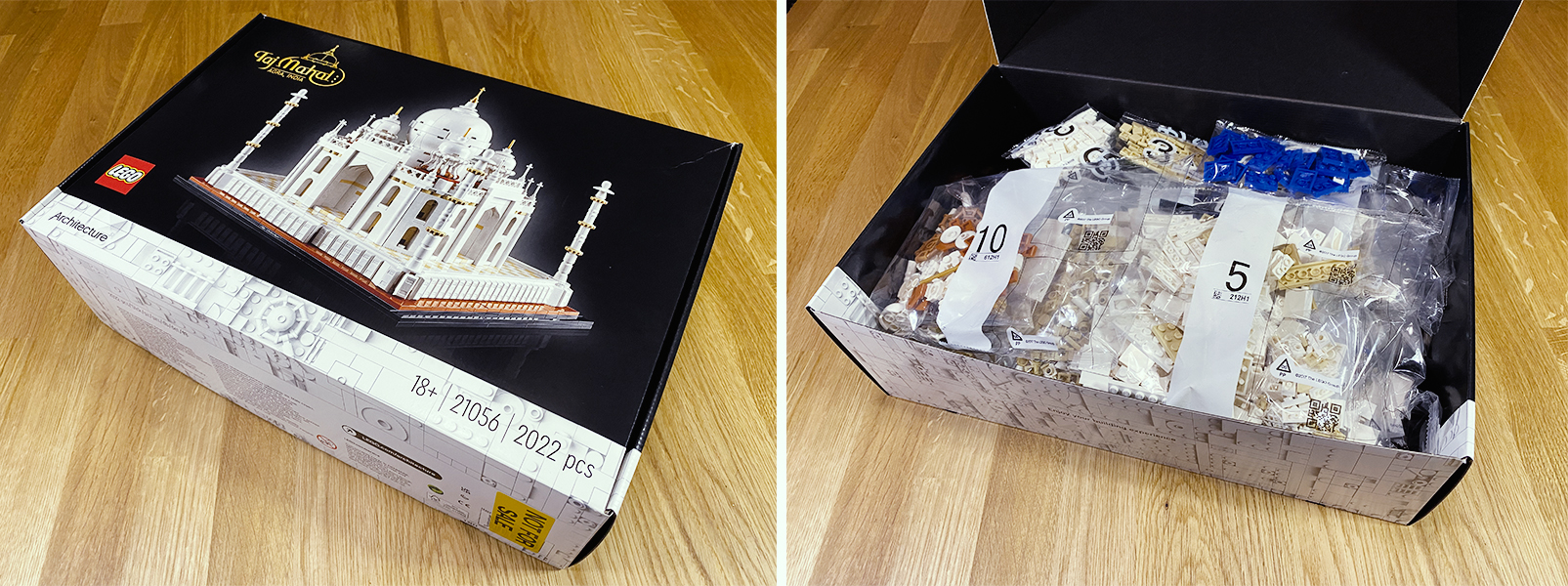
The first thing I noticed was that the box felt very heavy for its size. Which made sense when I opened it up because I found 12 bags stuffed inside. The booklet is standard for a set of this size but there isn’t much additional information in it of the Taj Mahal and only 1 paragraph for the design team. There are several thumbnail images sprinkled throughout as we get to different areas of the build which is a nice idea but they are so small it is hard to see any details.
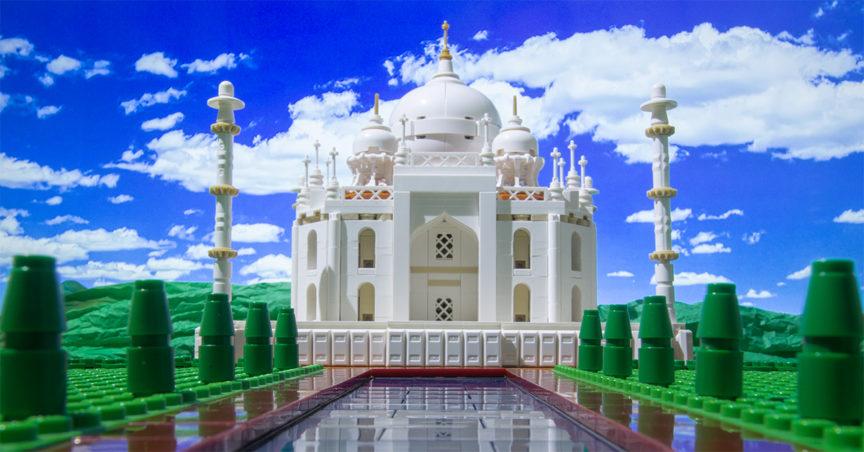
Let the building begin!

The first 2 bags were pretty typical for a set like this. Make a strong foundation, and add a little easter egg in there. I really appreciated the use of orange and green bricks in the corners which, along with white, are the main colors of the national flag of India.
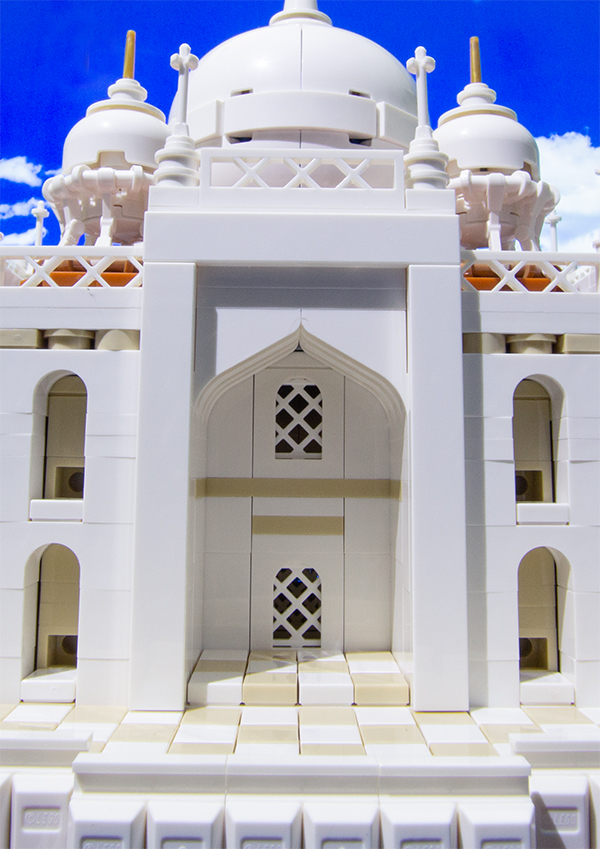
Another little detail that you will never see is in the center where two pieces are slightly offset a 1/2 stud to mimic the actual internal structure of the Taj Mahal. From there the level of detail continues to build as we start to lay down the base and you are greeted by HUNDREDS of 1×1 tiles pieces. This was by far the most tedious part of the building process but well worth it for the overall look of the set.
Moving up the model you get to see my favorite architectural detail of the entire set – even though at first glance you likely would have missed it. The rounded corners protruding from the angular walls are the perfect detail to both accurately mimic the structure but also hide the gaps that are created with angles wall pieces in LEGO.
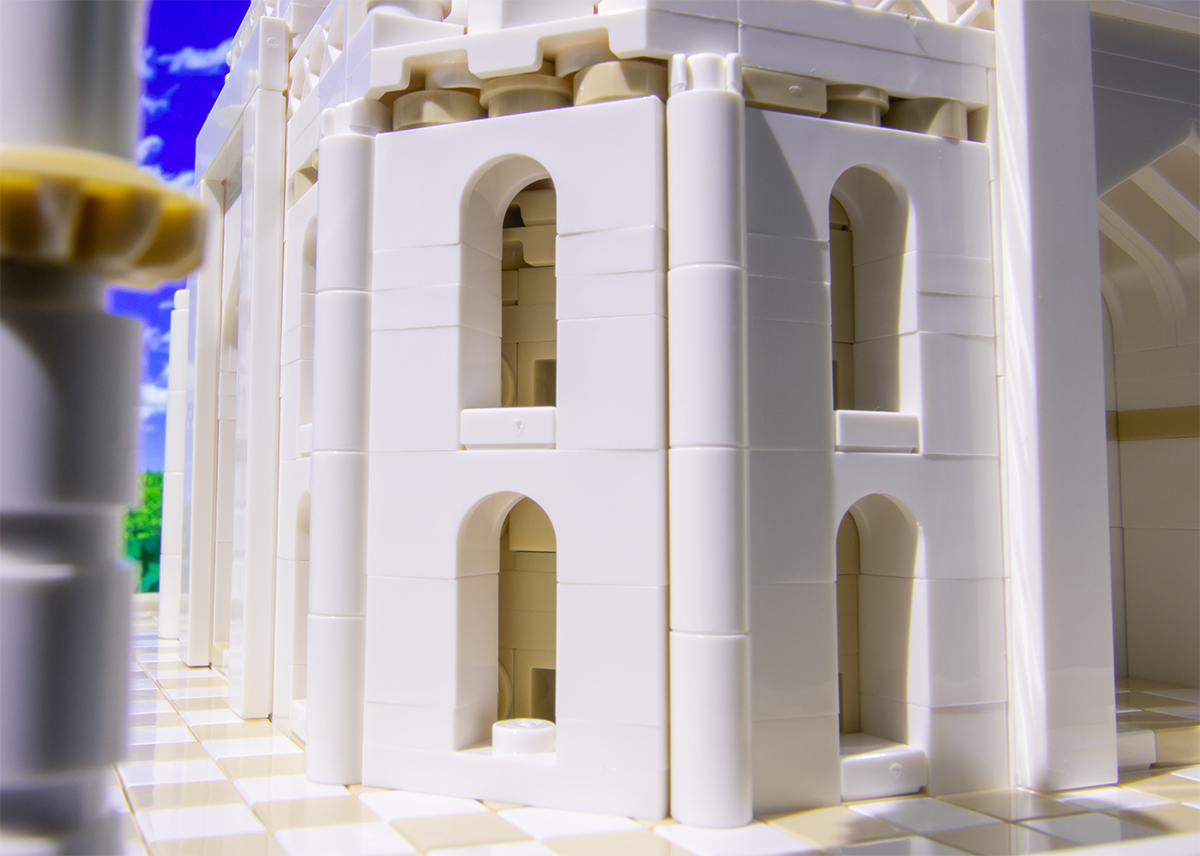
On top of that, the connection used to secure the column is brilliant! While it looks like just a simple clip, in order for them to be in the exact right position it requires a lot of interesting internal positioning of the entire middle of the structure.
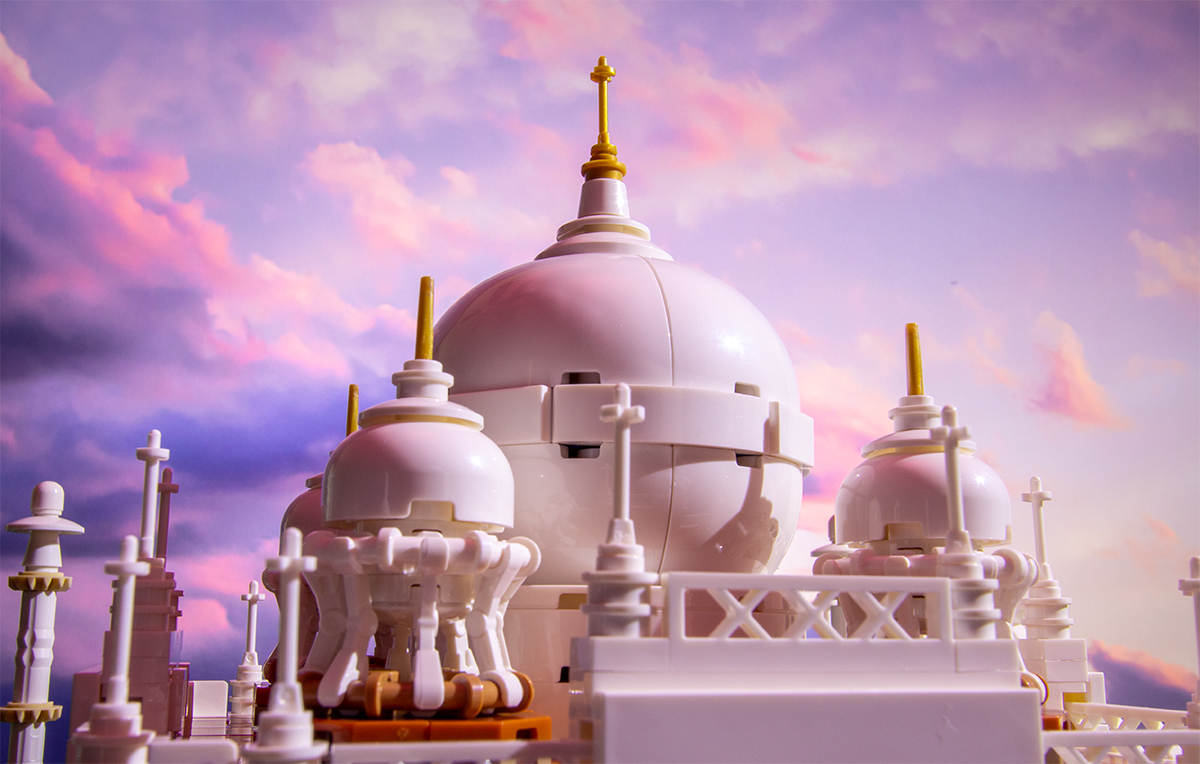
From there the rest of the build goes relatively fast as the domes and spires use larger pieces compared to almost everything before them. This is where I have some mixed feelings. While I like the construction and look of the large center dome, the four smaller domes around it make use of bent clips to represent the circular arches. This to me is the only “miss” as they look like neither walls nor arches and resemble something more appropriate in a space structure.
Behind the scene
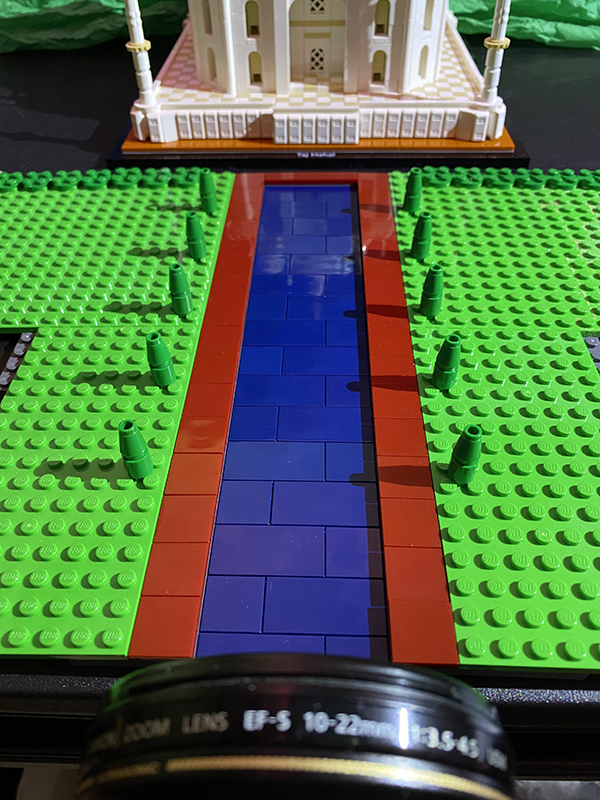
There really is one iconic view of the Taj Mahal and that is the straight shot with the long reflecting pool in front of it. The first thing I did was look up a few references and from there designed a simplified version of the grounds in the same scale as the set. To keep this simple I opted to use all LEGO and not real water or some other material for the reflection. I started off using black tiles as I knew they would be the most reflective but decided to change to dark blue tiles instead which worked quite well.
The lighting was pretty standard for me which means I matched the sun direction and ambient colors to the chosen sky background. In total I used two lights; the main sunlight coming from an LED flashlight from the right and a large spotlight casting an orangy-pink diffused light from above.
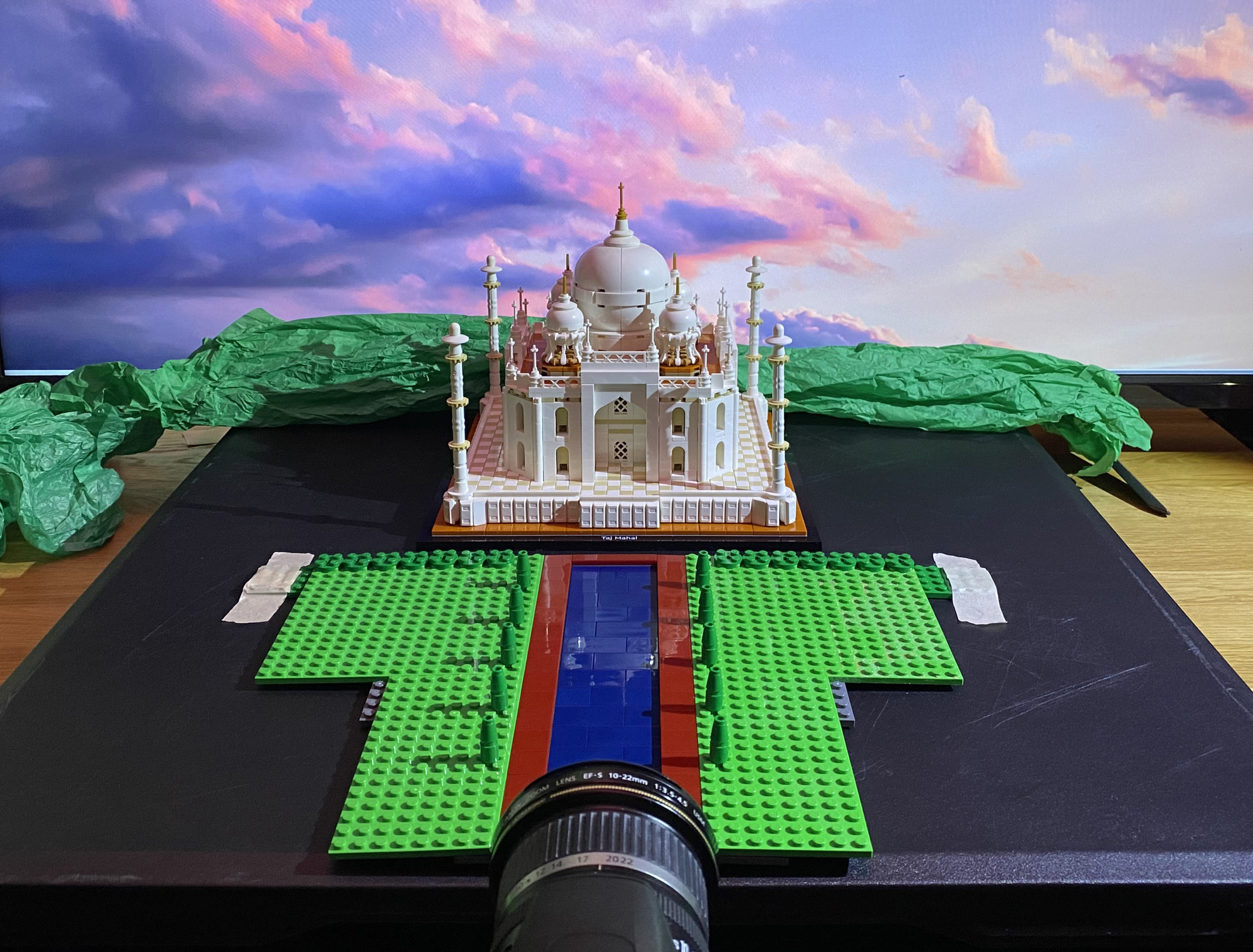
In post I opted to go with a softer, more atmospheric look, so I did a basic white balance while also adding some blue and lightening the shadows. At this point the green felt a little too strong so I pulled the saturation and brightness back to keep focus on the building.

Conclusion
Overall this set looks beautiful and will look great among any architectural set. There is no bad angle so it could just as easily work as a display piece in the center of a room as on a shelf. However, the size itself is a bit underwhelming for a set with over two thousand pieces in it – with a lot of the piece count going towards 1×1 tiles and the internal structure. There is a great parts selection with high quantities of some desirable pieces but the build did get tedious at times and outside of the few areas highlighted above, there were not too many exciting building technics.
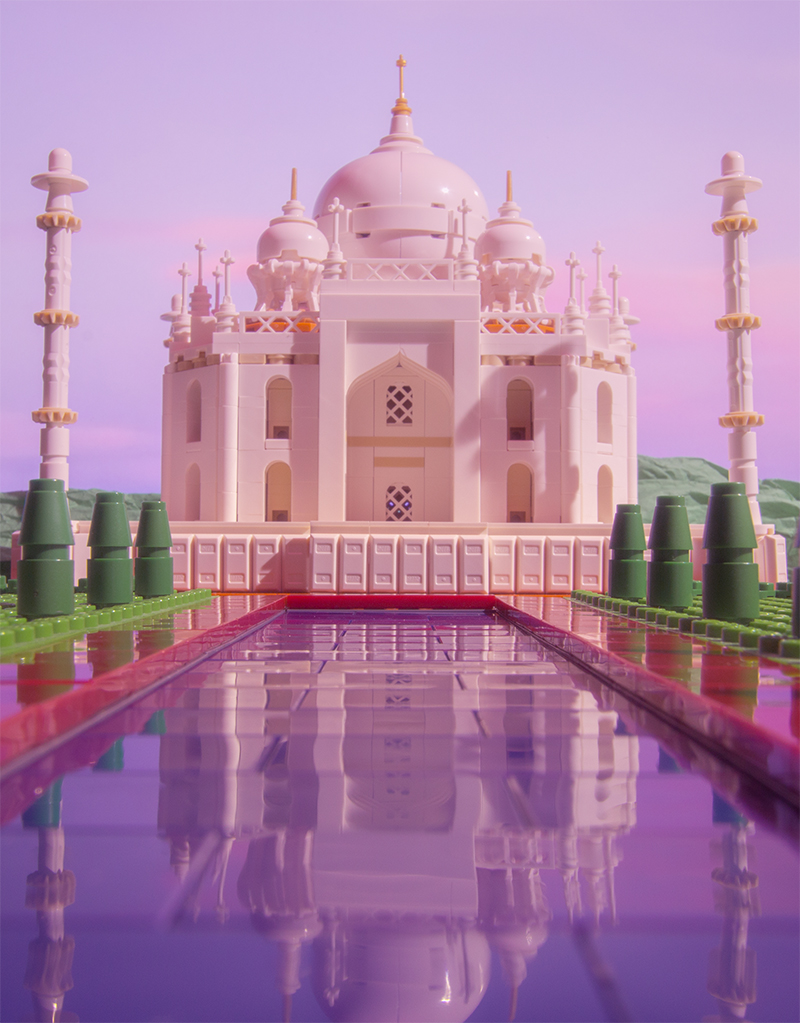
From a photography standpoint there are a few interesting details to get some novel close-ups but really there is only one iconic view that most people think about when they imagine the Taj Mahal. There is also not a practical way of doing any interior shots. Even if you deconstructed part of it there is not much to see on the inside as it is filled in by the inner chamber.
In conclusion, taking into account overall aesthetic, part selection, building process, and photography, I give the set a 7/10.
